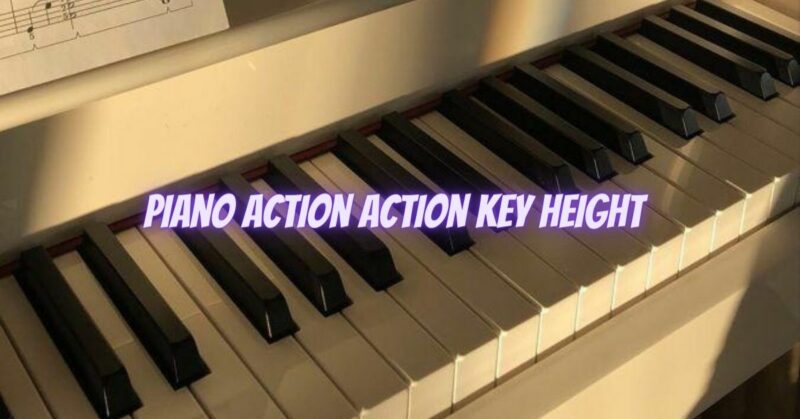The key height, also known as key dip or key travel, is a fundamental parameter in the design and regulation of a piano’s action. It refers to the distance that a piano key travels from its rest position to the fully depressed position when played. The key height significantly influences the touch and feel of the piano, affecting how responsive and controllable the instrument is for the pianist.
Importance of Key Height:
- Touch Sensitivity: The key height determines the amount of force required to depress a key and activate the hammer mechanism. A well-regulated key height ensures that the piano responds to the pianist’s touch, allowing for a wide range of dynamics and expression in the music.
- Comfortable Playing: The key height plays a crucial role in providing a comfortable playing experience. An appropriate key dip prevents strain on the pianist’s fingers and hands, promoting better endurance during long practice sessions and performances.
- Dynamic Range: The key height affects the piano’s dynamic range, allowing the pianist to achieve both soft and loud tones with ease. Proper key dip allows for greater control over volume and expression.
- Consistency: Ensuring consistent key height across all keys is essential for creating a balanced and uniform touch. Consistency allows the pianist to navigate the keyboard smoothly and accurately, contributing to better performance.
Key Height Regulation:
Regulating the key height is a delicate and precise process that requires the expertise of a skilled piano technician. It involves adjusting the key’s height by modifying the key button height and key button travel distance. The technician carefully measures and adjusts each key to achieve the desired key dip while maintaining consistency throughout the keyboard.
Effects of Improper Key Height:
- Heavy Action: If the key height is too low, the piano may feel heavy and require excessive force to depress the keys, leading to fatigue for the pianist and affecting the instrument’s playability.
- Light Action: Conversely, if the key height is too high, the keys may feel light and lack resistance, resulting in a lack of control over dynamics and expression.
- Unevenness: Inconsistent key height can lead to uneven touch across the keyboard, making it challenging to achieve a uniform and balanced performance.
Conclusion:
The key height is a critical element that directly impacts the playability and performance of a piano. Proper key height regulation ensures a responsive, comfortable, and controllable touch, allowing the pianist to express themselves effectively through music. Skilled piano technicians play a crucial role in achieving the optimal key height and maintaining consistent touch across the keyboard. For pianists, understanding the significance of key height empowers them to appreciate the intricacies of piano design and enjoy a rewarding playing experience on this majestic instrument.


